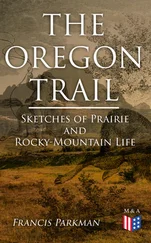Francis Parkman - A Half-Century of Conflict - Volume II
Здесь есть возможность читать онлайн «Francis Parkman - A Half-Century of Conflict - Volume II» — ознакомительный отрывок электронной книги совершенно бесплатно, а после прочтения отрывка купить полную версию. В некоторых случаях можно слушать аудио, скачать через торрент в формате fb2 и присутствует краткое содержание. Жанр: foreign_prose, История, foreign_edu, foreign_antique, на английском языке. Описание произведения, (предисловие) а так же отзывы посетителей доступны на портале библиотеки ЛибКат.
- Название:A Half-Century of Conflict - Volume II
- Автор:
- Жанр:
- Год:неизвестен
- ISBN:нет данных
- Рейтинг книги:4 / 5. Голосов: 1
-
Избранное:Добавить в избранное
- Отзывы:
-
Ваша оценка:
- 80
- 1
- 2
- 3
- 4
- 5
A Half-Century of Conflict - Volume II: краткое содержание, описание и аннотация
Предлагаем к чтению аннотацию, описание, краткое содержание или предисловие (зависит от того, что написал сам автор книги «A Half-Century of Conflict - Volume II»). Если вы не нашли необходимую информацию о книге — напишите в комментариях, мы постараемся отыскать её.
A Half-Century of Conflict - Volume II — читать онлайн ознакомительный отрывок
Ниже представлен текст книги, разбитый по страницам. Система сохранения места последней прочитанной страницы, позволяет с удобством читать онлайн бесплатно книгу «A Half-Century of Conflict - Volume II», без необходимости каждый раз заново искать на чём Вы остановились. Поставьте закладку, и сможете в любой момент перейти на страницу, на которой закончили чтение.
Интервал:
Закладка:
He had intended to winter with the tribe; but the loss of the presents and the interpreter made it useless to stay, and leaving two men in the village to learn the language, he began his return to Fort La Reine. "I was very ill," he writes, "but hoped to get better on the way. The reverse was the case, for it was the depth of winter. It would be impossible to suffer more than I did. It seemed that nothing but death could release us from such miseries." He reached Fort La Reine on the 11th of February, 1739.
His iron constitution seems to have been severely shaken; but he had sons worthy of their father. The two men left among the Mandans appeared at Fort La Reine in September. They reported that they had been well treated, and that their hosts had parted from them with regret. They also declared that at the end of spring several Indian tribes, all well supplied with horses, had come, as was their yearly custom, to the Mandan villages to barter embroidered buffalo hides and other skins for corn and beans; that they had encamped, to the number of two hundred lodges, on the farther side of the Missouri, and that among them was a band said to have come from a distant country towards the sunset, where there were white men who lived in houses built of bricks and stones.
The two Frenchmen crossed over to the camp of these Western strangers, among whom they found a chief who spoke, or professed to speak, the language of the mysterious white men, which to the two Frenchmen was unintelligible. Fortunately, he also spoke the language of the Mandans, of which the Frenchmen had learned a little during their stay, and hence were able to gather that the white men in question had beards, and that they prayed to the Master of Life in great houses, built for the purpose, holding books, the leaves of which were like husks of Indian corn, singing together and repeating Jésus, Marie . The chief gave many other particulars, which seemed to show that he had been in contact with Spaniards,—probably those of California; for he described their houses as standing near the great lake, of which the water rises and falls and is not fit to drink. He invited the two Frenchmen to go with him to this strange country, saying that it could be reached before winter, though a wide circuit must be made, to avoid a fierce and dangerous tribe called Snake Indians ( Gens du Serpent ). [Footnote: Journal du Sieur de la Vérendrye , 1740, in Archives de la Marine.]
On hearing this story, La Vérendrye sent his eldest son, Pierre, to pursue the discovery with two men, ordering him to hire guides among the Mandans and make his way to the Western Sea. But no guides were to be found, and in the next summer the young man returned from his bootless errand. [Footnote: Mémoire du Sieur de la Vérendrye, joint à sa lettre du 31 Oct. 1744 ]
Undaunted by this failure, Pierre set out again in the next spring, 1742, with his younger brother, the Chevalier de la Vérendrye. Accompanied only by two Canadians, they left Port La Reine on the 29th of April, and following, no doubt, the route of the Assinniboin and Mouse River, reached the chief village of the Mandans in about three weeks.
Here they found themselves the welcome guests of this singularly interesting tribe, ruined by the small-pox nearly half a century ago, but preserved to memory by the skilful pencil of the artist Charles Bodmer, and the brush of the painter George Catlin, both of whom saw them at a time when they were little changed in habits and manners since the visit of the brothers La Vérendrye. [Footnote: Prince Maximilian spent the winter of 1832-33 near the Mandan villages. His artist, with the instinct of genius, seized the characteristics of the wild life before him, and rendered them with admirable vigor and truth. Catlin spent a considerable time among the Mandans soon after the visit of Prince Maximilian, and had unusual opportunities of studying them. He was an indifferent painter, a shallow observer, and a garrulous and windy writer; yet his enthusiastic industry is beyond praise, and his pictures are invaluable as faithful reflections of aspects of Indian life which are gone forever.]
[Footnote: Beauharnois calls the Mandans Blancs Barbus , and says that they have been hitherto unknown. Beauharnois au Ministre, 14 Août , 1739. The name Mantannes, or Mandans, is that given them by the Assinniboins.]
Thus, though the report of the two brothers is too concise and brief, we know what they saw when they entered the central area, or public square, of the village. Around stood the Mandan lodges, looking like round flattened hillocks of earth, forty or fifty feet wide. On examination they proved to be framed of strong posts and poles, covered with a thick matting of intertwined willow-branches, over which was laid a bed of well-compacted clay or earth two or three feet thick. This heavy roof was supported by strong interior posts. [Footnote: The Minnetarees and other tribes of the Missouri built their lodges in a similar way.] The open place which the dwellings enclosed served for games, dances, and the ghastly religious or magical ceremonies practised by the tribe. Among the other structures was the sacred "medicine lodge" distinguished by three or four tall poles planted before it, each surmounted by an effigy looking much like a scarecrow, and meant as an offering to the spirits.
If the two travellers had been less sparing of words, they would doubtless have told us that as they entered the village square the flattened earthen domes that surrounded it were thronged with squaws and children,—for this was always the case on occasions of public interest,—and that they were forced to undergo a merciless series of feasts in the lodges of the chiefs. Here, seated by the sunken hearth in the middle, under the large hole in the roof that served both for window and chimney, they could study at their ease the domestic economy of their entertainers. Each lodge held a gens , or family connection, whose beds of raw buffalo hide, stretched on poles, were ranged around the circumference of the building, while by each stood a post on which hung shields, lances, bows, quivers, medicine-bags, and masks formed of the skin of a buffalo's head, with the horns attached, to be used in the magic buffalo dance.
Every day had its sports to relieve the monotony of savage existence, the game of the stick and the rolling ring, the archery practice of boys, horse-racing on the neighboring prairie, and incessant games of chance; while every evening, in contrast to these gayeties, the long, dismal wail of women rose from the adjacent cemetery, where the dead of the village, sewn fast in buffalo hides, lay on scaffolds above the reach of wolves.
The Mandans did not know the way to the Pacific, but they told the brothers that they expected a speedy visit from a tribe or band called Horse Indians, who could guide them thither. It is impossible to identify this people with any certainty. [Footnote: The Cheyennes have a tradition that they were the first tribe of this region to have horses. This may perhaps justify a conjecture that the northern division of this brave and warlike people were the Horse Indians of La Vérendrye; though an Indian tradition, unless backed by well-established facts, can never be accepted as substantial evidence.] The two travellers waited for them in vain till after midsummer, and then, as the season was too far advanced for longer delay, they hired two Mandans to conduct them to their customary haunts.
They set out on horseback, their scanty baggage and their stock of presents being no doubt carried by pack-animals. Their general course was west-southwest, with the Black Hills at a distance on their left, and the upper Missouri on their right. The country was a rolling prairie, well covered for the most part with grass, and watered by small alkaline streams creeping towards the Missouri with an opaque, whitish current. Except along the watercourses, there was little or no wood. "I noticed," says the Chevalier de la Vérendrye, "earths of different colors, blue, green, red, or black, white as chalk, or yellowish like ochre." This was probably in the "bad lands" of the Little Missouri, where these colored earths form a conspicuous feature in the bare and barren bluffs, carved into fantastic shapes by the storms. [Footnote: A similar phenomenon occurs farther west on the face of the perpendicular bluffs that, in one place, border the valley of the river Rosebud.]
Читать дальшеИнтервал:
Закладка:
Похожие книги на «A Half-Century of Conflict - Volume II»
Представляем Вашему вниманию похожие книги на «A Half-Century of Conflict - Volume II» списком для выбора. Мы отобрали схожую по названию и смыслу литературу в надежде предоставить читателям больше вариантов отыскать новые, интересные, ещё непрочитанные произведения.
Обсуждение, отзывы о книге «A Half-Century of Conflict - Volume II» и просто собственные мнения читателей. Оставьте ваши комментарии, напишите, что Вы думаете о произведении, его смысле или главных героях. Укажите что конкретно понравилось, а что нет, и почему Вы так считаете.












